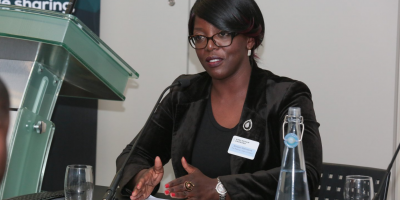
Ghana’s economy expanded by 6.3% year on year in the second quarter of 2025, up from a revised 5.7% in the same time the previous year, according to figures provided by the Ghana Statistical Service on Wednesday.
- Ghana’s economy grew by 6.3% in Q2 of 2025, primarily led by a 9.9% growth in the services sector.
- Agriculture and non-oil industries drove non-oil GDP growth to 7.8%, while oil production decreased.
- Inflation declined to 11.5% in August 2025, marking the eighth consecutive monthly decrease.
- The cedi stabilized due to increased gold revenues.
The recovery was mostly led by the services sector, which increased by 9.9% in the quarter, compared to only 2% growth the previous year.
Finance, insurance, trade, and education were the most significant contributors to the country’s recovery, according to Government Statistician Alhassan Iddrisu, as seen on Reuters.
Contribution of non-oil to Ghana’s GDP
Excluding oil, Ghana’s GDP expanded by 7.8%, boosted by growth in agriculture and other service industries. While oil output fell, agriculture’s resiliency offered an important buffer.
These current figures reflect a turning point for Ghana’s economy, which is recovering from its most severe economic crisis in decades.
Ghana’s inflation rate declined for the eighth consecutive month, demonstrating the country’s economic progress under its new leadership.
Inflation, previously a major concern, fell to 11.5% in August 2025, the lowest level since October 2021.
The finance ministry has set a year-end target of 11.9%, indicating that the disinflationary trajectory is mostly on track.
This disinflationary trend is visible in a variety of sectors, with food inflation decreasing to 14.8% in August from 15.1% the previous month and non-food inflation dropping to 8.7% from 9.5%.
This gradual moderation follows a longer-term trend that began in early 2025, when inflation exceeded 20%.
SEE ALSO: Ghana becomes Dangote refinery’s latest crude source as refinery hits 70% capacity
Inflation in the West African Gold Coast fell to 18.4% in May from 21.2% in April, and then to 13.7% in June, thanks mostly to a rise in gold prices, which increased the country’s foreign currency revenues and helped stabilize the cedi.

During the second quarter, the local currency increased by about 50% versus the dollar, but it has subsequently fallen by 14.8% owing to seasonal import demand.
Lower interest rates are expected to improve the outlook for the second half of the year.
In July, the Bank of Ghana reduced its benchmark rate by 300 basis points to 25%, the highest decrease on record.
Another rate decrease is expected at the September 17 meeting, potentially boosting economic activity by lowering borrowing costs for firms and families.












